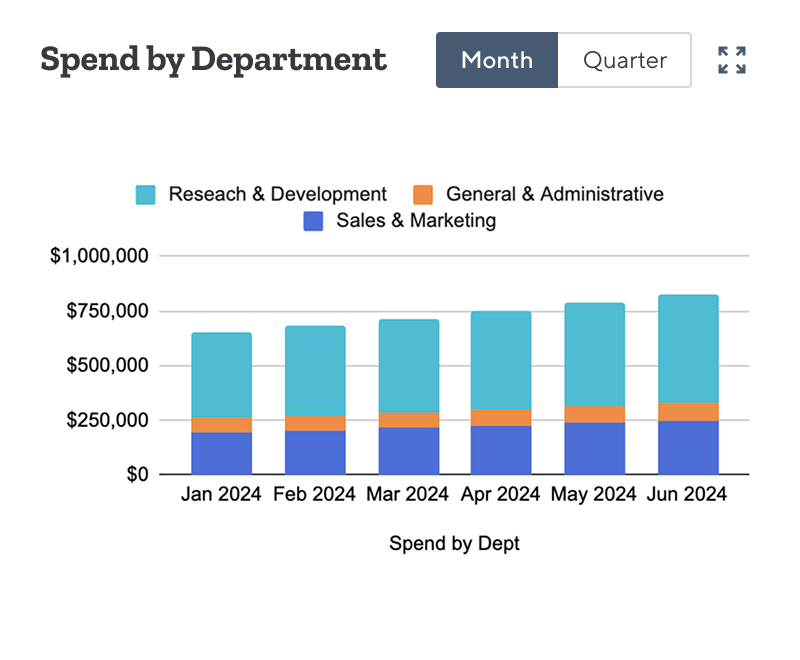Why SaaS and AI leaders trust Everest
Everest is the AI-native ERP purpose-built for finance leaders who need better revenue control over their subscription and consumption based businesses. It replaces fragmented tools and legacy systems with a single platform that automates order-to-cash, revenue recognition, and consolidation that gives executives and finance leaders real-time financial visibility, leaner operations, and regulatory compliance.
Reinventing ERP
for the modern
SaaS business
SaaS finance teams need more than surface-level support for subscriptions and reporting. Everest goes deeper, managing complex revenue models, dynamic invoicing scenarios, and global compliance in one unified platform. It’s automation you control, visibility you can trust, and scale without the sprawl.
- Built for SaaS Complexity: Manage recurring and usage-based invoicing, contract modifications, and large transaction volumes, all within one cohesive platform.
- Global Financial Visibility: Consolidate multi-entity, multi-currency operations with real-time reporting, automated eliminations, and support for local statutory books.
- Live Sandbox™ for Safe Change Management: Test and simulate transactions and business process changes in a dedicated environment, no disruption, no developer backlog.
- Margin Protection Where It Matters: Monitor cloud, AI, and people costs at a granular level to understand true margin impact and guide smarter decisions.

Drive profitability, resilience, and strategic advantage
Everest aligns operational execution with financial insight, helping SaaS companies improve margin structure, scale efficiently, and stay agile in the face of constant change. The result: stronger decisions, faster pivots, and a finance team that’s positioned as a strategic driver of growth.
- Accelerate Time-to-Insight: Deliver faster board reporting, investor updates, and scenario planning with always-on access to accurate, contextualized data.
- Improve Gross Margin Health: Uncover and address margin drag with visibility into cost drivers like cloud infrastructure, AI usage, and global headcount.
- Scale Without Growing Overhead: Support more entities, more complexity, and more transactions, without increasing manual workload or resources.
- Strengthen Operational Resilience: Eliminate dependencies on disconnected tools and fragile integrations that slow response times and create risk.
<6
Week NetSuite migration time
100%
Go-live success rate
Client Success
See what SaaS leaders are saying
Hear how Everest is helping SaaS finance and operations teams streamline their quote-to-cash cycles and drive real financial impact.
Karlyse Bailey
Director of Revenue and AR
Saas
“Everest has leveraged the deep industry expertise of its team to get the details right! From handling complex contract modifications and delivering actionable deferred revenue analytics to managing multi-entity and multi-currency journal entries, Everest simplifies the most intricate accounting processes.”
Clark Hall (They / Them)
2X Controller, Former Controller at Tegus
Industrial
“Everest took every piece of feedback from accounting practitioners to heart. They took their time to work with professionals across segments of industry in very carefully constructed ways to lead to a truly exciting new option for mid-level businesses to consider when looking to upgrade their ERP.”
Lisa Schulz
3x Controller and 3 ERP Implementations
Finance
“Everest enables accounting teams to make huge productivity strides by streamlining table-stakes accounting work and giving them tools to become better business partners to the operational side of the house.”
Karlyse Bailey
Director of Revenue and AR
Saas
“Everest has leveraged the deep industry expertise of its team to get the details right! From handling complex contract modifications and delivering actionable deferred revenue analytics to managing multi-entity and multi-currency journal entries, Everest simplifies the most intricate accounting processes.”
Clark Hall (They / Them)
2X Controller, Former Controller at Tegus
Industrial
“Everest took every piece of feedback from accounting practitioners to heart. They took their time to work with professionals across segments of industry in very carefully constructed ways to lead to a truly exciting new option for mid-level businesses to consider when looking to upgrade their ERP.”
Lisa Schulz
3x Controller and 3 ERP Implementations
Finance
“Everest enables accounting teams to make huge productivity strides by streamlining table-stakes accounting work and giving them tools to become better business partners to the operational side of the house.”
FAQ
Frequently Asked Questions
Hear how Everest is helping SaaS finance and operations teams streamline their quote-to-cash cycles and drive real financial impact.
How is Everest different from legacy ERP systems?
Legacy ERPs like NetSuite were originally designed for traditional businesses, not for the complexity of SaaS or AI. They often require bolt-on tools, custom scripts, and manual work to handle recurring revenue, usage-based invoicing, and contract changes.
Everest is built specifically for SaaS from day one. It includes native support for subscription invoicing, automated revenue recognition aligned with ASC 606, and real-time SaaS metrics like ARR and MRR all in one system. You also get features legacy ERPs can’t match, like the Live Sandbox™ for safe change management, built-in cloud and people cost tracking for margin visibility, and AI-powered automation that doesn’t require developer support. With Everest, you move faster, automate more, and scale without the technical debt.
How does Everest eliminate the need for bolt-ons and disconnected tools?
Many SaaS finance teams rely on a mix of an Accounting system, Excel, and point invoicing/revenue recognition solutions just to manage core daily operations. This patchwork approach creates data silos, constant reconciliation work, and process breakdowns, especially as the business scales.
Everest eliminates that complexity by consolidating core functions into one purpose-built platform. You get native support for subscription invoicing, usage tracking, revenue recognition, reporting, global consolidations, and SaaS metrics, all under a single system. There’s no need to sync between tools or build fragile integrations.
With Everest, everything from order-to-cash to record-to-report runs on a unified data model, giving you real-time visibility, consistent workflows, and fewer errors. It’s a more efficient, resilient, and cost-effective way to operate.
Do I have to implement the whole Everest platform at once?
Everest is a modular platform that gives SaaS companies the flexibility to start where they have the most need. You can begin with a single capability, like General Ledger, Revenue Recognition, or Cloud Cost Management, without committing to a full-suite deployment.
For example, some teams use Everest solely for Record to Report to consolidate multiple entities and manage intercompany transactions; others adopt it for the end-to-end ERP capabilities spanning ASC 606-compliant revenue recognition, multi-entity consolidation and tracking of cloud infrastructure and spend by customer and product line. All modules are built on a unified architecture, so you can expand into additional capabilities, like subscription management, or people cost visibility, when the time is right, without duplicating setup or re-integrating data. This phased approach lowers risk, accelerates time to value, and allows you to scale Everest alongside your business priorities.
Can Everest ERP handle multi-entity, multi-currency accounting?
Yes. Everest is designed to support complex global finance operations. It enables true multi-entity, multi-currency, and multi-book accounting within a single platform. You can manage separate ledgers, fiscal calendars, and charts of accounts across entities, while maintaining visibility through consolidated financial reporting.
Built-in currency conversion, revaluation, and translation tools ensure accuracy across borders, and audit trails track every transaction for compliance. Everest also supports localized reporting requirements, making it easier to stay compliant in multiple jurisdictions as you scale internationally.
How does Everest simplify subscription invoicing and revenue recognition?
Everest unifies subscription invoicing and revenue recognition in a single platform, so there’s no need for disconnected tools or manual reconciliations. You can manage complex invoicing scenarios (recurring, usage-based, milestone-based, custom and hybrid models) all from one system.
Revenue contracts are automatically generated from sales orders, with products and services mapped to performance obligations and tracked according to ASC 606. When customers upgrade, downgrade, cancel, or modify terms, Everest adjusts both invoicing and revenue recognition automatically. This eliminates spreadsheet work, reduces audit risk, and ensures your financials are always accurate and compliant.
What makes Everest an AI-first ERP platform?
Everest was designed from the ground up with AI at its core. From our architecture to user experience, every layer of the platform is designed to help you automate intelligently, adapt quickly, and operate more efficiently. You get prebuilt AI agents that handle routine tasks like variance analysis, data mapping, and validation right out of the box.
Need something specific? Business users can create custom agents using natural language prompts (no coding required). Everest also includes AI-assisted development tools that help you configure and extend the platform faster, plus the Live Sandbox™ where you can safely test and simulate system changes in real time.
Unlike legacy ERPs where AI is bolted on or limited to niche use cases, Everest gives you end-to-end control over intelligent automation built directly into the way your finance and operations teams work.
How long does it take to implement Everest ERP?
Most teams with a complete end-to-end deployment go live with Everest in under 90 days, a fraction of the time typical ERP projects take. Implementations with fewer modules can be up and running within 4-6 weeks. That’s because Everest is purpose-built for SaaS workflows, so you don’t need months of expensive customization or third-party integrations to get started.
Our implementation process is led entirely by Everest’s in-house team of SaaS finance and systems experts. They understand your business model, your metrics, and your operational priorities, and they tailor your rollout accordingly. You’ll get a structured, phased implementation with guided setup, data migration, and user training, all designed to minimize disruption and reduce risk.
And with built-in tools to streamline configuration and a Live Sandbox™ for safe testing, Everest helps your team adopt the platform quickly and easily.
See how Everest
can transform your
SaaS operations
Discover how Everest empowers finance and operations leaders to
drive faster growth, smarter decisions, and stronger margins.



